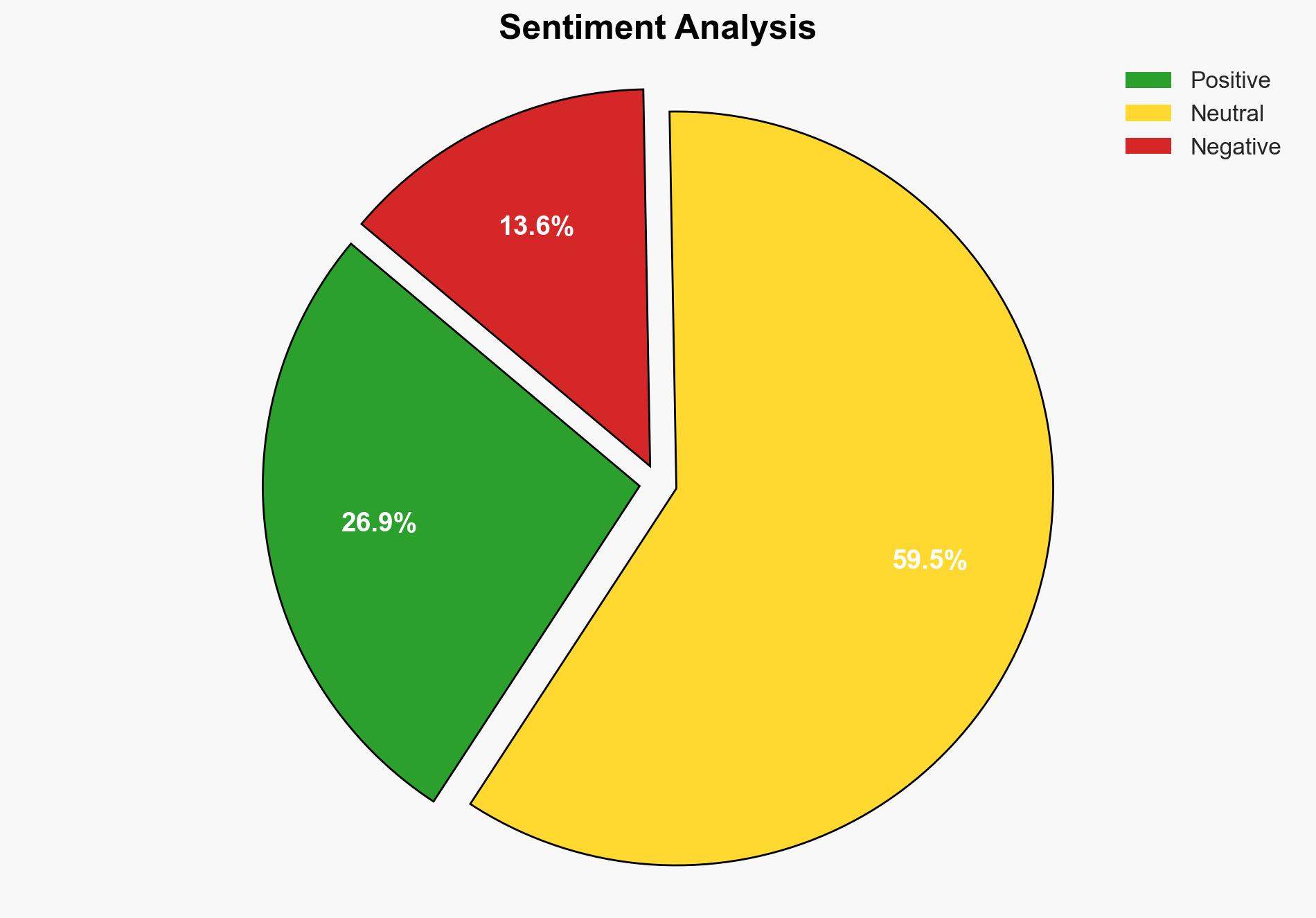Saudi Arabia 269 Bn Critical Infrastructure Protection Market Trends Competition Forecast and Opportunities 2020-2024 2025-2030 – GlobeNewswire
Published on: 2025-11-14
AI-powered OSINT brief from verified open sources. Automated NLP signal extraction with human verification. See our Methodology and Why WorldWideWatchers.
Intelligence Report: Saudi Arabia 269 Bn Critical Infrastructure Protection Market Trends Competition Forecast and Opportunities 2020-2024 2025-2030 – GlobeNewswire
1. BLUF (Bottom Line Up Front)
The Saudi Arabian Critical Infrastructure Protection (CIP) market is poised for substantial growth driven by heightened cyber and physical threats, particularly in the energy sector. The most supported hypothesis is that this growth will continue as Saudi Arabia invests heavily in CIP solutions to safeguard its economic backbone. However, challenges in integration and interoperability of CIP technologies pose significant risks. Confidence Level: High.
2. Competing Hypotheses
Hypothesis 1: The CIP market in Saudi Arabia will experience sustained growth due to increasing threats and government investment in security measures.
Hypothesis 2: Despite the current growth trajectory, the CIP market may face stagnation due to challenges in technology integration and potential geopolitical instability affecting investment flows.
Hypothesis 1 is more likely due to the consistent pattern of threats and the Saudi government’s demonstrated commitment to CIP investment, as evidenced by recent incidents and strategic responses.
3. Key Assumptions and Red Flags
Assumptions: The Saudi government will continue prioritizing CIP investments; the threat landscape will remain constant or escalate.
Red Flags: Over-reliance on government reports may introduce bias; potential underestimation of integration challenges; geopolitical tensions could alter investment priorities.
4. Implications and Strategic Risks
The primary implication is the increased resilience of Saudi Arabia’s critical infrastructure, particularly in the energy sector. However, failure to address integration challenges could lead to vulnerabilities. Escalation scenarios include intensified cyberattacks leading to economic disruptions or geopolitical tensions impacting energy exports.
5. Recommendations and Outlook
- Enhance collaboration with international cybersecurity experts to improve CIP technology integration.
- Invest in training programs for local cybersecurity professionals to build domestic expertise.
- Best Case: Successful integration of CIP solutions leads to a robust defense against threats, ensuring economic stability.
- Worst Case: Integration failures result in significant vulnerabilities, leading to successful attacks and economic disruptions.
- Most Likely: Continued growth with gradual improvements in integration, maintaining a moderate level of risk.
6. Key Individuals and Entities
Saudi Aramco, National Cybersecurity Authority, Eastern Province Ras Tanura Terminal.
7. Thematic Tags
Cybersecurity, Critical Infrastructure Protection, Energy Security, Saudi Arabia, Geopolitical Risk
Structured Analytic Techniques Applied
- Adversarial Threat Simulation: Model and simulate actions of cyber adversaries to anticipate vulnerabilities and improve resilience.
- Indicators Development: Detect and monitor behavioral or technical anomalies across systems for early threat detection.
- Bayesian Scenario Modeling: Quantify uncertainty and predict cyberattack pathways using probabilistic inference.
Explore more:
Cybersecurity Briefs ·
Daily Summary ·
Support us
·





